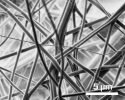SANTA CLARA, Calif.--(BUSINESS WIRE)--
Agilent Technologies Inc. (NYSE:A) introduces the latest addition to its portfolio of solutions for biopharmaceutical labs: the Agilent 6545XT AdvanceBio LC/Q-TOF MS System.
Optimized to address analytical workflows commonly used in biopharma, the new LC/Q-TOF MS system combines high-performance liquid chromatography with robust quadrupole time-of-flight mass spectrometry and data-analysis tools. A research-grade system, the 6545XT is designed to deliver superior results to scientists seeking to characterize biomolecules that could be the basis for new therapeutics.
“Agilent is committed to providing complete workflow solutions to the biopharma industry that address critical areas for biotherapeutic development,” said Monty Benefiel, Agilent vice president and general manager of the company's Mass Spectrometry Division. “Agilent solutions built around the 6545XT enable scientists to characterize biomolecule structure and function more efficiently than ever, resulting in reduced time to market and improved drug efficacy.”
The 6545XT has also been optimized for use in profiling intact proteins, mapping peptides and identifying post-translational modifications.
Additionally, Agilent’s solutions for these types of workflows are further enhanced by the Agilent AdvanceBio LC column portfolio including the introduction today of a new column: the AdvanceBio Peptide Plus column. This column is designed for LC/MS peptide separations utilizing our unique superficially porous particle technology.
These new products complement and optimize Agilent’s existing biopharma portfolio, which includes products for sample preparation, separation, detection and analysis.
About Agilent Technologies
Agilent Technologies Inc. (NYSE: A), a global leader in life sciences, diagnostics and applied chemical markets, is the premier laboratory partner for a better world. Agilent works with customers in more than 100 countries, providing instruments, software, services and consumables for the entire laboratory workflow. The company generated revenues of $4.20 billion in fiscal 2016 and employs about 12,500 people worldwide. Information about Agilent is available at www.agilent.com.
View source version on businesswire.com: http://www.businesswire.com/news/home/20170307005935/en/



